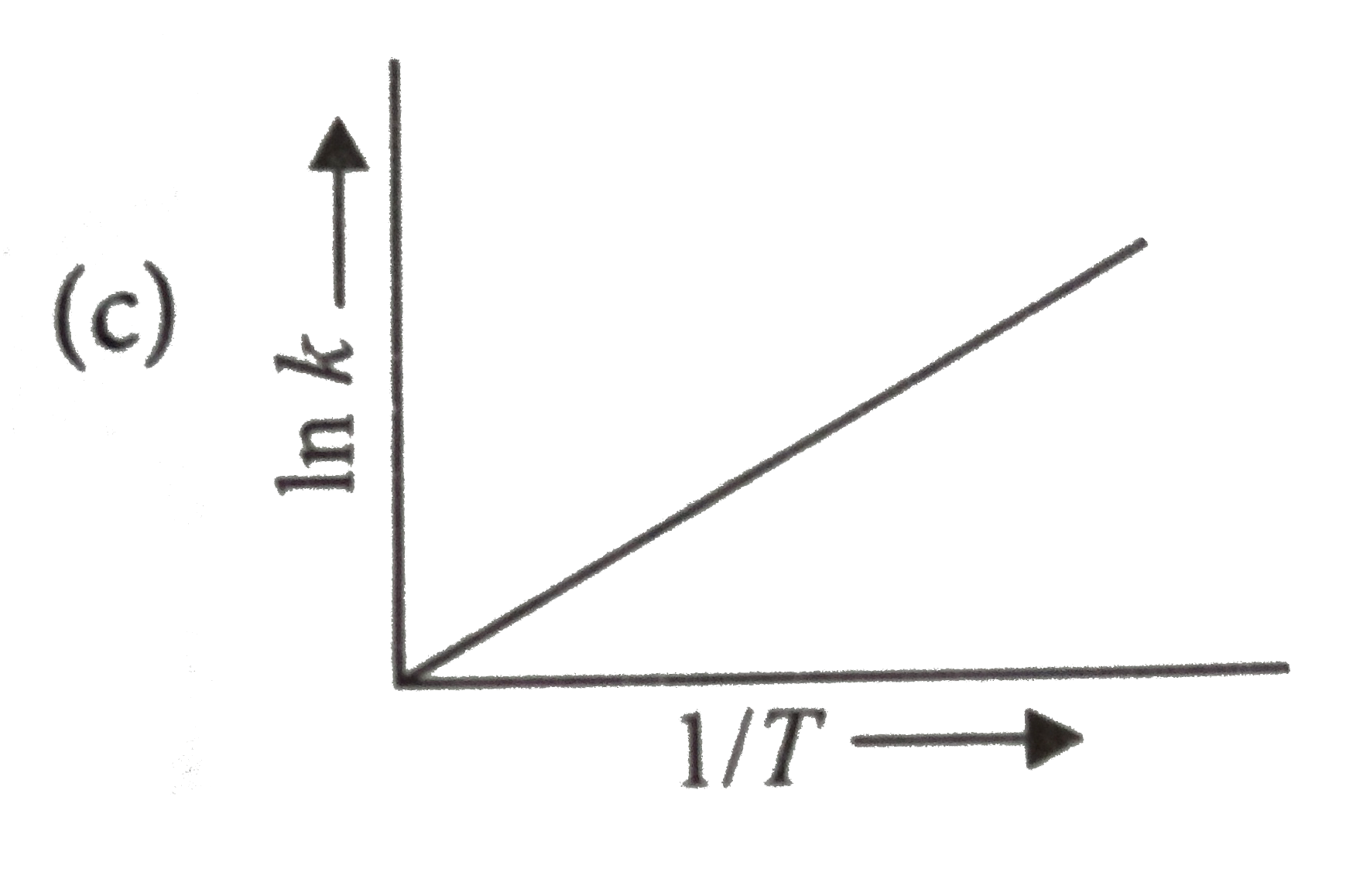According to Arrhenius equation rate constant k is equal to Ae−Ea/RT. Which of the following option. Represents the graph of ln k us 1T?




The correct Answer is:A
To solve the problem, we need to analyze the Arrhenius equation and derive the relationship between the natural logarithm of the rate constant (ln k) and the reciprocal of temperature (1/T). Here’s a step-by-step solution:
Step 1: Write the Arrhenius Equation
The Arrhenius equation is given as:
k=Ae−EaRT
where:
- k = rate constant
- A = pre-exponential factor
- Ea = activation energy
- R = universal gas constant
- T = temperature in Kelvin
Step 2: Take the Natural Logarithm of Both Sides
To analyze the relationship, we take the natural logarithm of both sides of the Arrhenius equation:
lnk=lnA−EaR⋅1T
Step 3: Rearrange the Equation
We can rearrange the equation to match the form of a straight line y=mx+c:
lnk=−EaR⋅1T+lnA
Here, we can identify:
- y=lnk
- m=−EaR (slope)
- x=1T
- c=lnA (y-intercept)
Step 4: Identify the Graph Characteristics
From the rearranged equation, we can conclude:
- The graph of lnk versus 1T will be a straight line.
- The slope of the line will be negative (since −EaR is negative).
- The y-intercept of the line will be lnA.
Step 5: Conclusion
Thus, the graph of lnk versus 1T is a straight line with a negative slope and a y-intercept of lnA.
Now, we can determine which option from the given choices represents this graph. The correct option will show a straight line that slopes downwards from left to right.
The Arrhenius equation is given as:
k=Ae−EaRT
where:
- k = rate constant
- A = pre-exponential factor
- Ea = activation energy
- R = universal gas constant
- T = temperature in Kelvin
To analyze the relationship, we take the natural logarithm of both sides of the Arrhenius equation:
lnk=lnA−EaR⋅1T
We can rearrange the equation to match the form of a straight line y=mx+c:
lnk=−EaR⋅1T+lnA
Here, we can identify:
- y=lnk
- m=−EaR (slope)
- x=1T
- c=lnA (y-intercept)
From the rearranged equation, we can conclude:
- The graph of lnk versus 1T will be a straight line.
- The slope of the line will be negative (since −EaR is negative).
- The y-intercept of the line will be lnA.
Thus, the graph of lnk versus 1T is a straight line with a negative slope and a y-intercept of lnA.
Topper's Solved these Questions
- CHEMICAL KINETICSBOOK - NCERT FINGERTPS ENGLISHCHAPTER - CHEMICAL KINETICSEXERCISE - ASSERTION & REASON
15 Videos
- CHEMICAL KINETICSBOOK - NCERT FINGERTPS ENGLISHCHAPTER - CHEMICAL KINETICSEXERCISE - Rate Of A Chemical Reaction
17 Videos
- CHEMICAL KINETICSBOOK - NCERT FINGERTPS ENGLISHCHAPTER - CHEMICAL KINETICSEXERCISE - Higher Order Thinking Skills
9 Videos
- BIOMOLECULESBOOK - NCERT FINGERTPS ENGLISHCHAPTER - BIOMOLECULESEXERCISE - Assertion And Reason
15 Videos
- CHEMISTRY IN EVERYDAY LIFE BOOK - NCERT FINGERTPS ENGLISHCHAPTER - CHEMISTRY IN EVERYDAY LIFE EXERCISE - NCERT Exemplar
15 Videos
Similar Questions
Knowledge Check
According to Arrhenius equation, rate constant k is equal to Ae−Ea/RT Which of the following options represents the graph of In k vs1T ?
A B
B C
C D
D
According to Arrhenius equation, rate constant k is equal to Ae−Ea/RT Which of the following options represents the graph of In k vs1T ?
A B
B C
C D
D
According to Arrhenius equation, rate constant k is equal to Ae−Ea/RT Which of the following options represents the graph of In k vs1T ?
A B
B C
C D
D
In the Arrhenius equation: k=Aexp(−Ea/RT), the rate constant
View SolutionFor the Arrhenius equation, the slope for the plot ln k vs 1/T is
View SolutionConsider the Arrhenius equation given below and mark the correct option.
k=Ae−Ea/RT
View SolutionConsider the Arrhenius equation given below and mark the correct option.
k=Ae−EaRT
View SolutionConsider the Arrhenius equation given below and mark the correct option.
k=Ae−EaRT
View Solution
